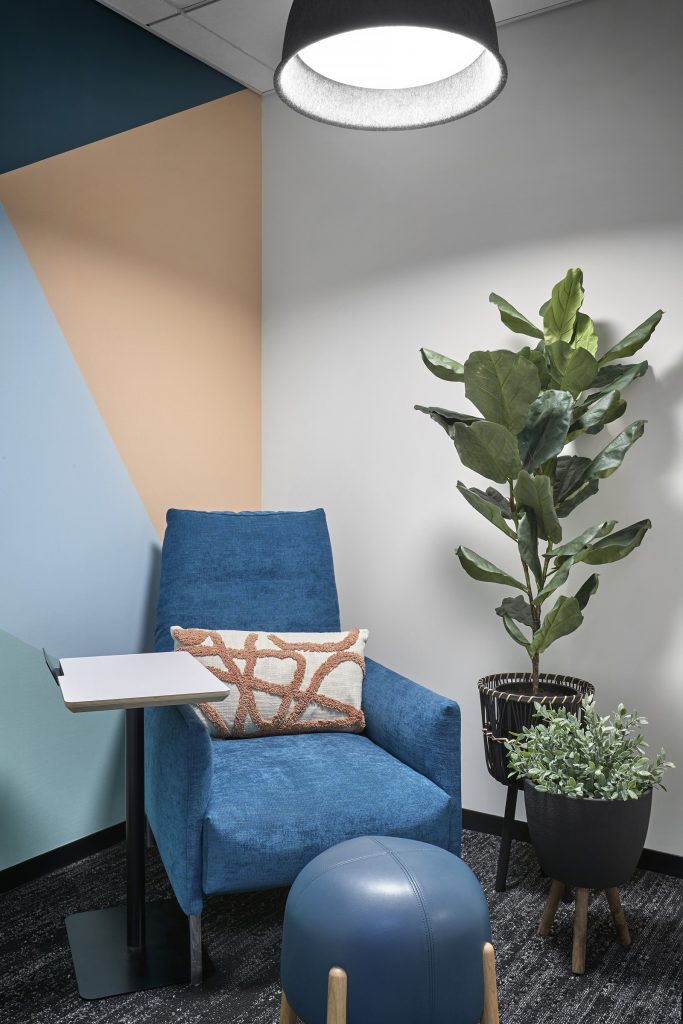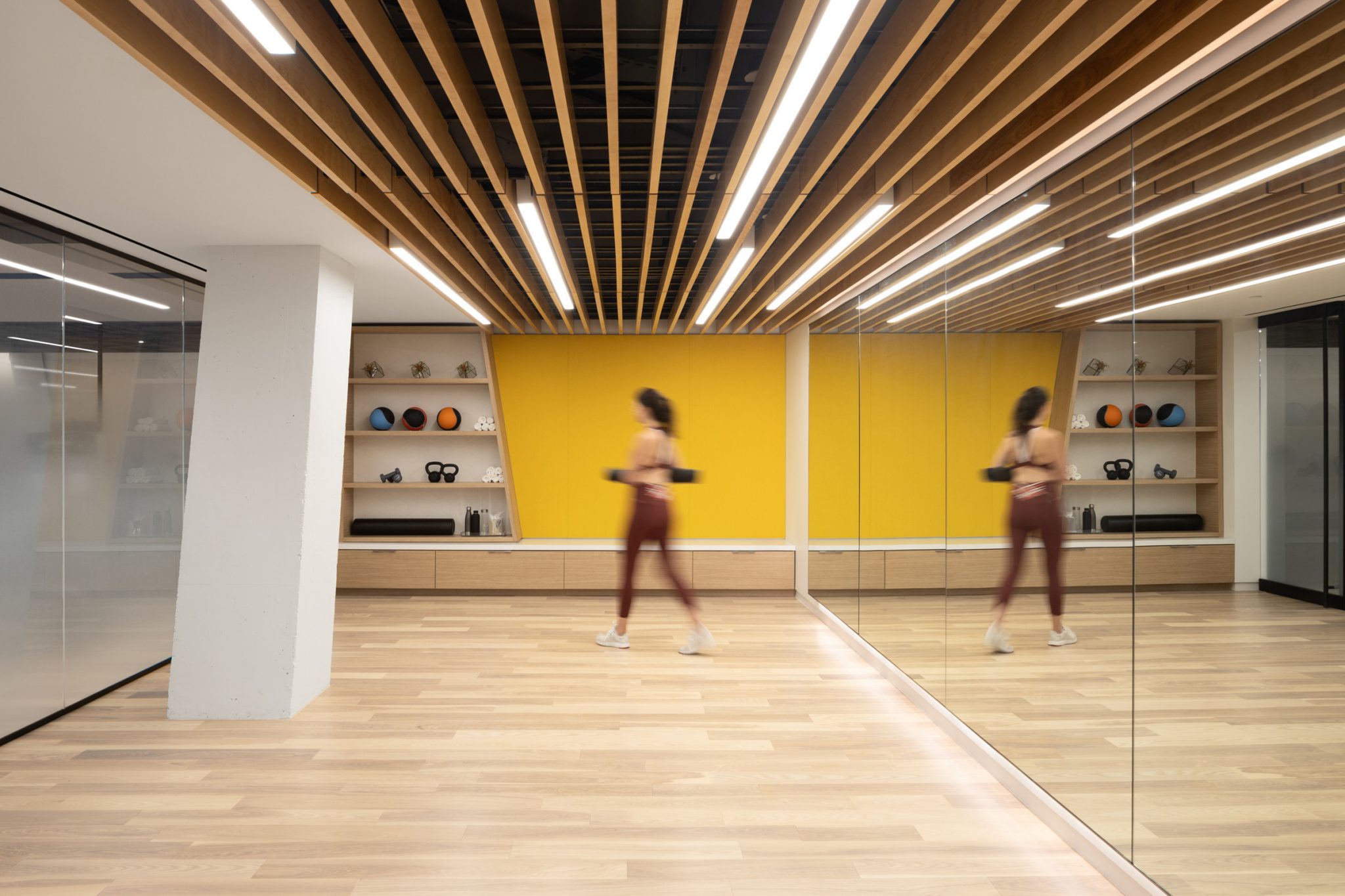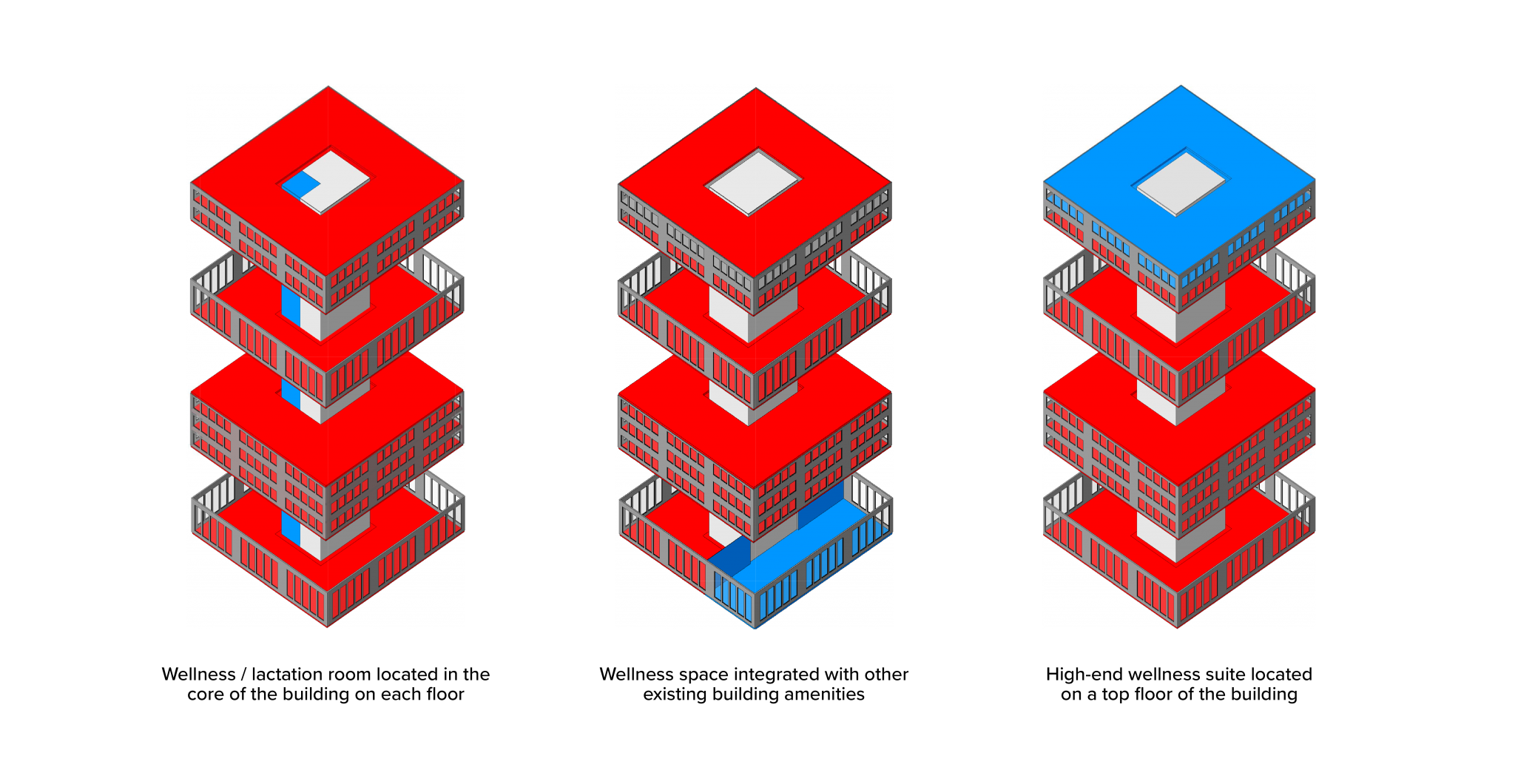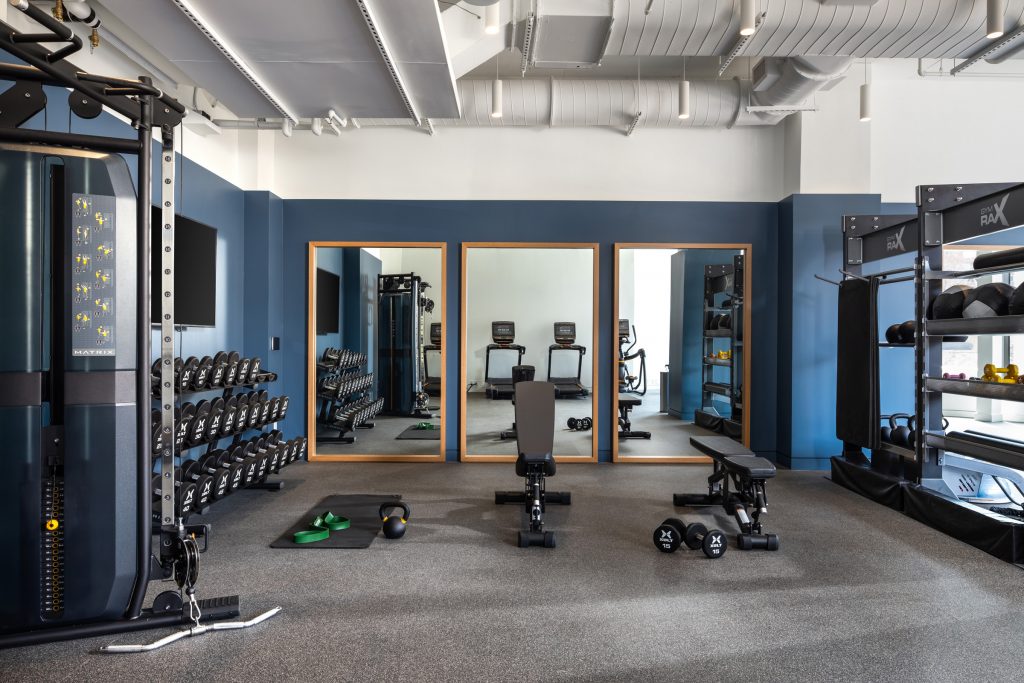Overwhelming evidence points to workspace design affecting employee mental and physical health, and therefore performance and productivity. But in DC’s high rent environment, it’s prohibitively difficult for small and pre-existing tenants to provide proper wellness space–whether it be a federally-mandated lactation room or private space for managing mental, physical, and spiritual health. These barriers are especially detrimental to establishing equity and inclusivity in a diverse workforce.
What is Wellness?
Wellness is a holistic approach to better health encompassing physical, mental, and spiritual self-care. Many employees require private space that is not provided in an open work environment during the workday. Lack of private space for self-care leads to stress, lower productivity and engagement, and physical health problems as people seek to cope at work. Many able employees have specialized wellness needs, from nursing mothers to people managing ongoing conditions like diabetes and mental health challenges like PTSD. Providing a space for personal wellness is the next step to welcoming and including a wider population of workers to thrive in the workplace.


A Right to Health
To comply with the 2010 Fair Labor Standards, Act for Nursing Mothers Accommodation, the minimum scope of wellness space is a lactation room for currently nursing mothers. An exception may be granted to companies with 50 employees or less with special applications. Under federal law, additional private wellness spaces can be required to support prayer and meditation (Title VII of the Civil Rights Act) and administering medication for chronic conditions (Americans with Disabilities Act). Other considerations could include spaces to accommodate yoga or napping, providing healthy food choices, access to purified water and air, circadian lighting, temperature control, and other features that have been scientifically proven to support employee wellbeing and productivity.
“Harvard researchers have found that for every $1 spent on employee wellness, medical costs fall $3.27 and absenteeism drops $2.73, which is a 6-to-1 return on investment.”

Our Process
Wellness spaces and programming can be incorporated into new or existing buildings in a variety of ways, with a variable program of spaces as small as 50 SF to as large as a dedicated floor. To examine the scalability and size of wellness space, this study ran test fits for the following scenarios to establish a program and kit-of-parts, understand federal requirements by use, determine optimum locations, and understand the implications for the Building Owners and Managers Association.
- In new buildings, they can be designed into the building core near the restrooms.
- Buildings being re-positioned can add wellness spaces as part of a curated building environment, or as part of other renovations like conference and fitness centers.
- Existing buildings can transform empty suites into wellness spaces for building tenants to access.


Centering Certification
Pursuing LEED and WELL building certifications can prove advantageous to many building owners and developers to help plot out alterations to buildings and spaces that are both healthy and sustainable. Emphasis on these programs can increase tenant interest and employee productivity as well as retention while reducing energy costs and improving long-term building performance.

Recommended Reading
- Baiker, Katherine, David Cutler, Zirui Song. Health Affairs. “Workplace Wellness Programs Can Generate Savings.” February 2010; 29(2):304-11.
- Caufield, John. “A Healthier perspective: Office developers bet on wellness amenities to attract top-notch tenants.” Building Design + Construction Magazine. Feb. 15, 2019.
- National Business Group on Health. “Investing in Workplace Breastfeeding Programs and Policies” 2009.
- Walton, Jennifer. Work Design Magazine. “Wellness programs average a 6:1 ROI” Jan 31, 2018.
What's Next?
A healthy building leads to healthy people and a healthy planet. We’d call that a win-win-win. Our goal is to bring a balanced and inclusive approach to amenitizing all of our projects, regardless of scale and budget. The lessons learned through this iLab exploration have already been applied to a variety of commercial office and workplace projects–including the design of our new Union Market District headquarters. Come see for yourself.

